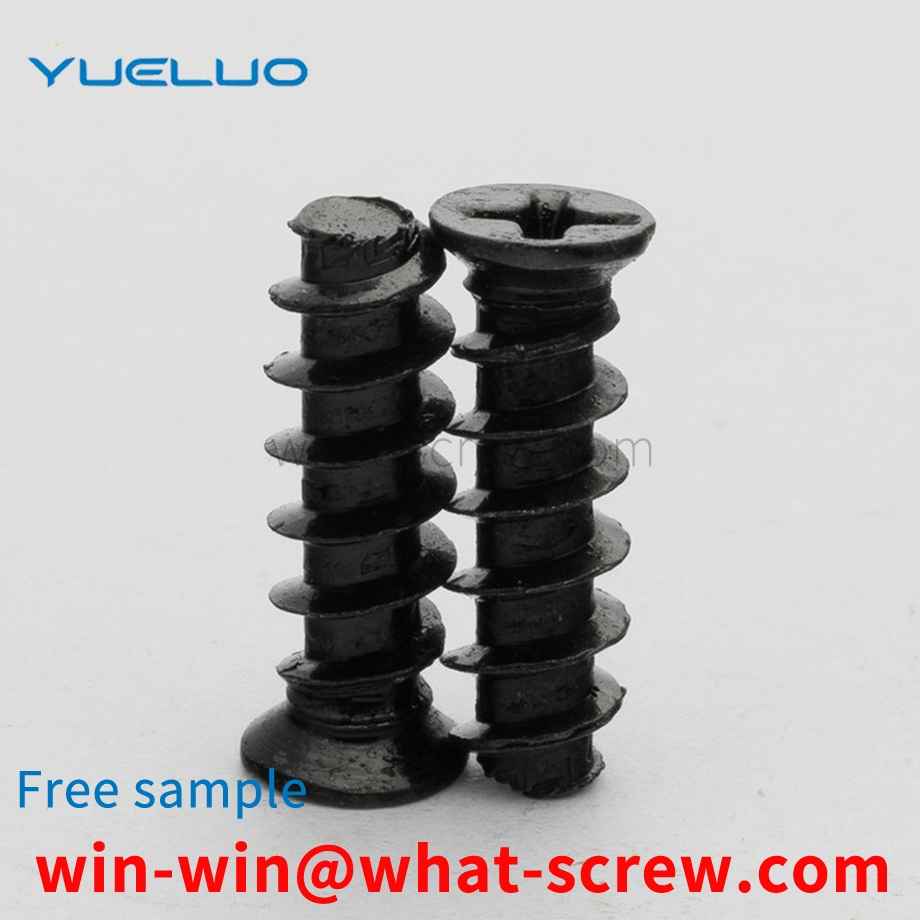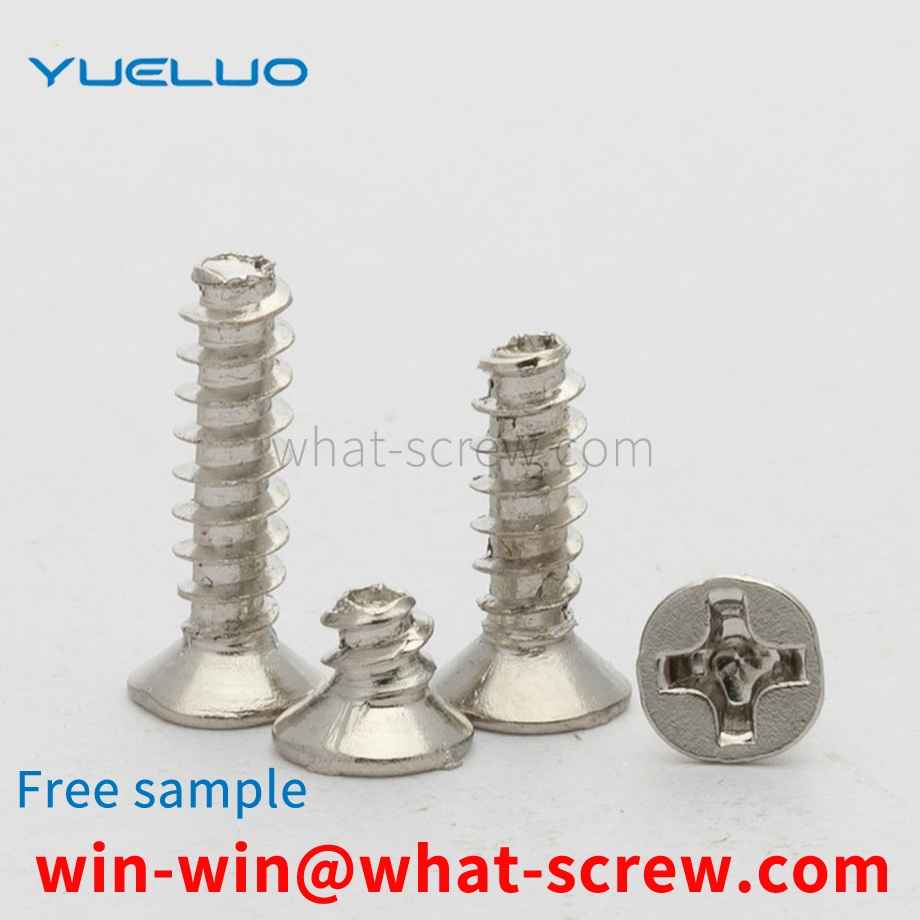Stainless Steel Nuts Hexagon Nuts (GB6170/DIN934), Thin Nuts (GB6172/DIN439), Heavy Nuts (Metric, US), Nylon Lock Nuts (DIN985-DIN982 Thick), All Metal Lock Nuts (DIN980M), Cap Nuts (DIN1587), Flange Nuts (GB6177/DIN6923), Flange Nuts Nylon Lock Nuts (DIN6926), Square Weld Nuts (DIN928), Hex Weld Nuts (DIN929), Butterfly Caps (GB62, DIN315, American), K cap, etc. Specifications: M1.6-M64
Material and process requirements The self-tapping locking screw should be made of high-quality carburized steel cold heading, generally no larger than M12. The finished material should be drawn with a high total reduction rate before cold heading, so that the cold heading must be spheroidized. Annealing, in order to enhance the surface hardness and the toughness of the core, most of them are made of medium and low carbon steel. The chemical composition of the material in the standard is only for guidance. The C content is 0.13%~0.37%, the Mn content is 0.64%~1.71%, and the B content can reach 0.005%. The elements of S, P, Mn and Si in the commonly used steel are generally lower than those of the ordinary bolt steel of the same grade. And the surface quality of the material is strictly controlled to reduce deformation resistance and prevent deformation and cracking. Commonly used grades are 20Mn, 15MnB, SWRCH22A, 1022A and medium carbon steel, medium carbon alloy steel SWRCH35K, SCM435, SCR435, etc. Self-tapping locking screws are threads with an arc-shaped triangular cross-section, so the formulation of cold heading and wire rolling processes, as well as the design and manufacture of cold heading dies and special rolling plates are very important. Self-tapping locking screws require a high-hard surface for cutting and extruding capabilities due to the need for self-tapping low carbon steel. At the same time, there must be sufficient core strength and toughness to prevent twisting and breaking during work. The heat treatment process of this type of screw belongs to shallow carburizing. Regardless of whether it is made of low carbon steel or medium carbon or medium carbon alloy steel, its core hardness must be guaranteed to be within the range of 28~38HRC (9.8 grade) 33~39HRC (10.9 grade) and not less than the minimum tensile load of 930MPa (9.8 grade), 1040MPa (grade 10.9), depending on the material, the minimum tempering temperature is 420℃. In order to ensure that the self-tapping locking screw can be smoothly screwed into the prefabricated cylindrical hole, the end of the screw should be hardened by high-frequency quenching to ensure that at least one to three thread teeth are hardened, and the minimum surface hardness is 45HRC.
All kinds of industrial equipment need to be installed on the equipment foundation for work and operation. The equipment foundation includes concrete foundation, steel base, steel platform, steel frame and other forms.
Electrical contact element is a kind of low-voltage electrical products and household electrical products widely used in switches, relays, thermostats, circuit breakers, contactors, controllers, timers, etc. There are mainly three types of electrical contact elements. 1. Riveting parts , riveting the rivet on the copper piece; 2. Welding piece, welding the sheet contact on the copper piece; 3. Stamping piece, punching the composite tape into components. Existing rivet contacts on the market at present are usually all made of precious metals, such as a simple metal matrix such as gold or silver. Its electrical contact performance is limited by a single metal material, and its electrical contact performance is poor; and due to certain requirements for metal purity in production, production efficiency is low, and production costs are high, resulting in the production of products that cannot be sold on a large scale in the market. and application.
In the process of electronic accessories such as mobile phones and computers, especially multi-layer circuit boards, there are generally fixed connections between multi-layer circuit boards or other components. At present, there are two main connection methods. One is to use laser welding. However, the laser welding equipment is expensive and has very high requirements on the position of the weldment. Therefore, during welding, it must be ensured that the final position of the weldment needs to be the same as the laser beam will impact. Solder joint alignment. The other is to use a metal rivet to pass through the positioning hole, and then impact the rivet with a punching needle, so that the open end of the rivet is deformed and opened and pressed on the fixed piece to form a rivet fixed state. However, in actual operation, when the open end of the rivet tube is opened and deformed by the impact, strong cracking often occurs, resulting in a small amount of conductive fracture debris, which falls on the circuit board or other devices to be connected, causing Short circuit, in view of this shortcoming, some manufacturers have changed the metal rivets to plastic materials, but the plastic rivets have poor ductility and often break when impacted with a punching needle, resulting in the failure to achieve the riveting fixing force of the original metal rivets. In addition, the above two fixing methods are complicated in operation and low in installation efficiency.
We have many years of experience in the production and sales of screws, nuts, flat washers, etc. The main products are: electronic equipment pressure riveting parts, GB818 round head bolts, DIN582 lifting nuts, cold punched solid rivets and other products, we can provide you with suitable fasteners. Firmware Solutions.



















 Service Hotline
Service Hotline




